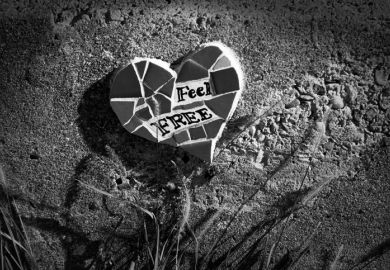The election of Mahmoud Ahmadinejad in 2005 to the presidency of Iran astonished the country and the world. He was "a dark horse", one of numerous candidates likely to be eliminated in the first round of voting.
Despite the long list of aspirants at the start of the election campaign, the contest was basically between the candidate of the Reformists - the partisans of the outgoing President Khatami - and former President Rafsanjani, a wily and pragmatic cleric who represented the traditional Right, the "old conservatives", whose victory was widely predicted. Instead, Ahmadinejad - the candidate of what the authors of this fascinating and careful study call the neoconservatives - was propelled to the front, and went on to win by a landslide in the second ballot.
Ehteshami and Zweiri try to unravel the intricacies of Iranian politics by examining the complex networks of personal loyalties, family connections and factional relations among the ruling class since the revolution of 1979.
Their central thesis is that the rise of the neoconservatives in America had its parallel in Iran, and was brought about by the hardline revolutionaries, who had been marginalised by the Reformists and the old conservatives, the clerical elite.
The authors describe how, through a series of clever manoeuvres in local and parliamentary elections between 2001 and 2005, the Iranian neoconservatives created a power base and paved the way for their candidate's victory in the presidential elections.
They also demonstrate how America and the West got it wrong about Iran all along. A few months after President Carter called Iran "an island of stability" in a volatile region, the Shah's regime fell as a result of a popular revolution, "without a shot being fired".
And instead of weakening the new revolutionary regime of Ayatollah Khomeini, Iran's long war with Iraq consolidated it. Afterwards, the ravaged country badly needed foreign help and turned first to fellow Muslims. At the meeting of the Organisation of Islamic Countries in Senegal in 1991, Rafsanjani, then President, so effectively pleaded with the assembled leaders that several decided to establish economic and political relations with Iran immediately. The country also worked to strengthen its ties with Russia and China, and begin the process of reconciliation with the West.
By 1997, popular discontent over the sorry state of the economy, harsh "Islamic" laws curtailing individual freedoms (particularly those of women) and the clerical elite's alleged corruption, led to the unexpected victory of President Khatami, "the smiling Mullah", an intelligent, moderate, "clean" cleric and close ally of Ayatollah Khomeini.
He seemed genuinely interested in introducing representative government, civil society and the rule of law. But he failed to capitalise on his popular mandate to make it impossible to reverse his reforms.
Gradually he alienated the old guard and the neoconservatives, and disenchanted his constituency by not addressing people's immediate economic concerns.
Ahmadinejad fought a populist campaign, based on "economic justice" and the promise of using oil money to improve living standards, following "the Chinese model" - economic liberalisation without political liberty.
His background played a part in rallying the majority of ordinary voters: he came from a humble family and still lived simply. Publicity clips on television showed his modest two-room house in a populous area of Tehran, a far cry from the opulent residences of the Mercedes-driving, ostentatiously rich old conservative mullahs. He had been a student activist and later a Revolutionary Guard, and rose to prominence through local politics.
According to Ehteshami and Zweiri, the Iranian neoconservatives belong to various powerful groups, chief among them the Sepah - an independent army parallel to the National Army - which includes members of the old Revolutionary Guard. They hark back to the ideals of the revolution and the example of its leader, Ayatollah Khomeini. They wield strong economic power through involvement in business and industry, from oil to property and luxury goods. Their allegiance is to the Supreme Leader, Ayatollah Ali Khamenei, who is effectively in charge of foreign policy.
As the authors demonstrate, it seems that once again much has been promised and little delivered to the Iranian people by its current neoconservative leaders. The pledge of economic reform in favour of the poor has not materialised, inflation is rampant, unemployment and other social problems beset the young (70 per cent of the population is under 30) and the rhetoric of defiance gives ammunition to the American hardliners.
So, like American neoconservatism, the Iranian variety has lost its credibility. With the Iraqi inferno at its border, other jittery neighbours and President Bush's idle threats, what the future has in store for Iran is anyone's guess. But this well-written, thorough survey, with its 50 pages of charts, maps and notes, will help the reader to understand the maddening volatility of Iranian politics.
Shusha Guppy's memoir, A Girl in Paris: A Persian Encounter with the West , was published by I. B. Tauris in June.
Iran and the Rise of its Neoconservatives: The Politics of Tehran's Silent Revolution
Author - Anoushiravan Ehteshami and Mahjoob Zweiri
Publisher - I.B. Tauris
Pages - 224
Price - £20.00
ISBN - 9781845113889
Register to continue
Why register?
- Registration is free and only takes a moment
- Once registered, you can read 3 articles a month
- Sign up for our newsletter
Subscribe
Or subscribe for unlimited access to:
- Unlimited access to news, views, insights & reviews
- Digital editions
- Digital access to THE’s university and college rankings analysis
Already registered or a current subscriber? Login



